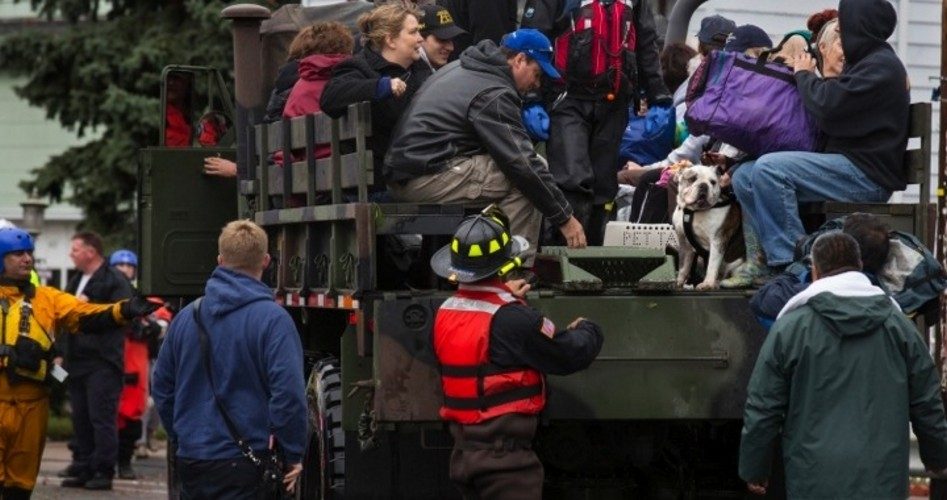
Thanks to governmental mismanagement, “Frankenstorm” Sandy may be remembered as the storm with the proportionately worst aftermath in American history. Measured simply by the criteria of its severity as a storm, far worse storms have occurred. But the ongoing misery which has taken place since Sandy made landfall while politicians from New York City Mayor Michael Bloomberg to President Obama demonstrating an appalling “tone deafness” to those languishing under the ongoing effects of the storm, places Sandy in a category where the instantaneous politicization of the storm hampered relief efforts.
As Rebecca Terrell wrote last week for The New American:
Though Hurricane Sandy did break records in regard to barometric pressure, wave surges, and power outages, she is not the trend-setter some claim. She is neither the largest Atlantic storm on record nor the deadliest. The National Hurricane Center reports Olga was the largest in recorded history with a wind extent of 600 miles, more than 100 miles greater than Sandy’s. In terms of death toll, among the top ten worst U.S. natural disasters reported by LiveScience are the Galveston Hurricane of 1900 which claimed 8,000 lives and the Lake Okeechobee Hurricane of 1928 which killed 2,500.
According to the catastrophe insurance provider ICAT, even if Sandy’s damage fulfills worst-case estimates, she would also not make the top 10 list of costliest hurricanes.
Sandy is a storm that received media hype before she began and government mismanagement afterward. FEMA is now promising to begin bringing in trailer houses for those people still homeless from the ‘superstorm’ — a move which brings back memories of the worst days of the aftermath of Katrina in 2005. According to a November 6 article for ABC News, for all of the funds and effort expended revamping FEMA’s mission after Katrina — and the brazen political exploitation of Katrina by opponents of then-President George Bush — the federal bureaucracy is having a hard time coping which a proportionately smaller disaster:
There are still more than 1.4 million homes and businesses without power, more than 115,000 in New York City alone. Sandy has left as many as 40,000 New Yorkers homeless, according to city officials. About half of those people live in public housing.
FEMA has already dispensed close to $200 million in emergency housing assistance and put 34,000 people in New York and New Jersey in hotels and motels. Still, city and state officials have not laid out an official plan with specifics to move the homeless into long-term housing in an already congested area.
By comparison, Katrina destroyed over 200,000 homes and over 288,000 people homeless, with 2.5 million households requesting FEMA assistance. While governmental bureaucracies fumbled the Staten Island relief efforts, Mayor Bloomberg perfectly mismanaged the decision to cancel the New York City Marathon, wasting time and resources in the days leading up to the decision to cancel the race, and finally decided to cancel it after runners had already traveled to New York, placing further pressure on the city’s overburdened infrastructure. For the 30,000 runners who traveled from outside the city to participate in the marathon, the reaction is well-summarized in the comments of one participant who crossed the Atlantic Ocean, whose words were quoted in an article for the Chicago Tribune: “I have no words,” said Roberto Dell’Olmo, from Vercelli, Italy. Then later: “I would like that the money I give from the marathon goes to victims.”
In the end, the relief during, and the cleanup after, “superstorm” Sandy will no doubt largely fall to countless thousands of individuals who selflessly give of themselves for their neighbors — and for perfect strangers. Government agencies will continue to fail to learn the basic lesson of all such disasters: When bringing relief to the suffering, compassion is of far more importance that government bureaucracies.
Photo of people being loaded onto a truck and being transported from their flooded homes to dry ground in the aftermath of Hurricane Sandy: AP Images



